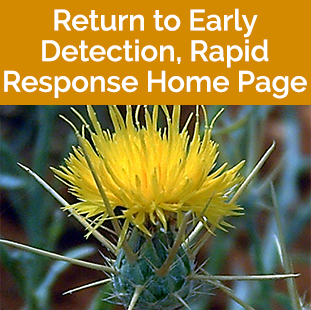Dyer's Woad
(1A, very limited presence in Montana)
(Isatis tinctoria)
Quick ID
- bluish-green leaves with cream-colored midvein
- bright yellow flowers
- pear-shaped seed pods that turn deep purple to black upon maturity
- can be more than 3’ tall
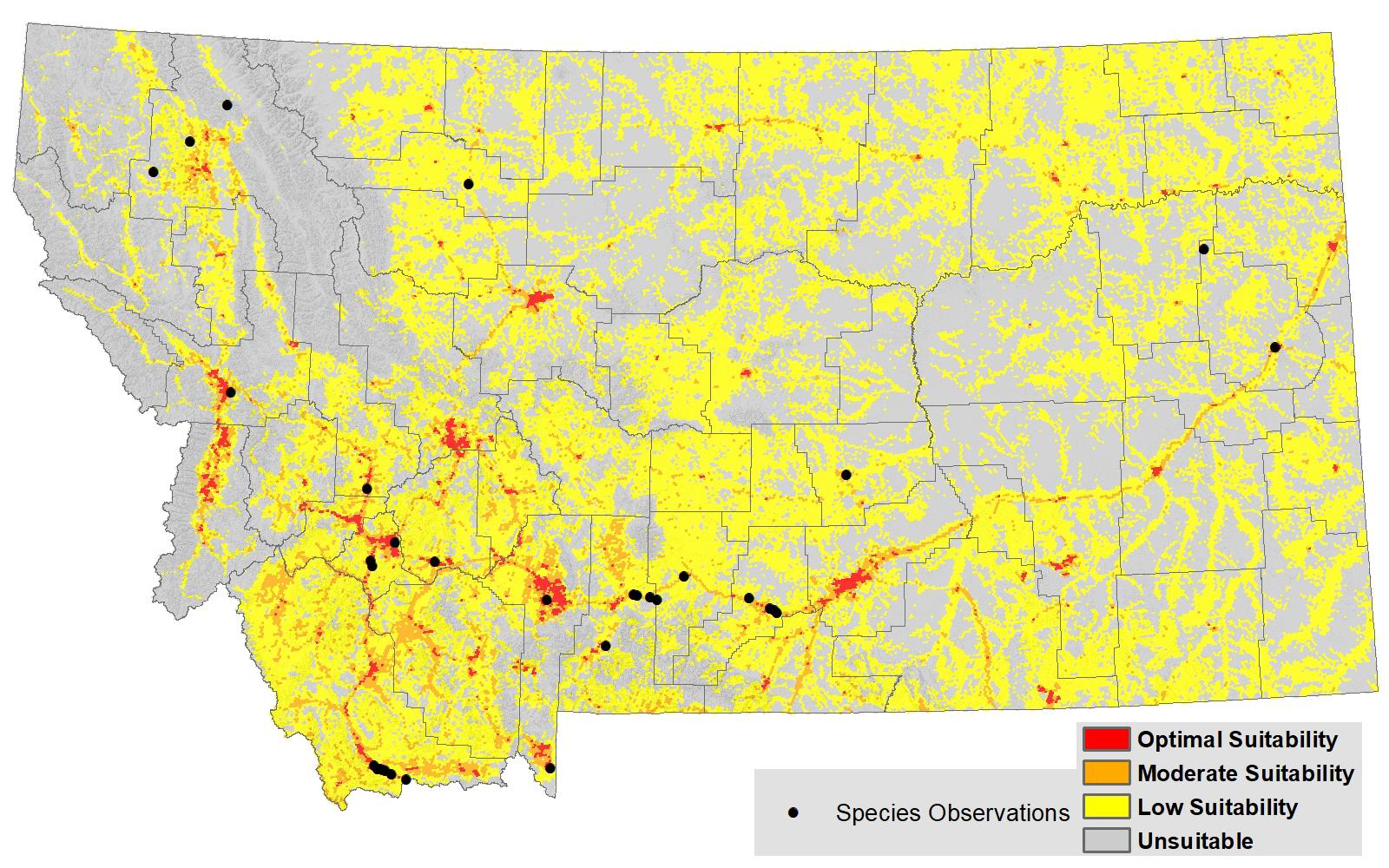
Map Courtesy of Montana Natural Heritage Program, Dyer’s Woad – Low Suitability: 31% of Montana, Moderate: 4%, Optimal: 2%. Dyer’s Woad is considered still active in 11 counties (Beaverhead, Flathead, Jefferson, Lewis and Clark, Missoula, Park, Powell, Silver Bow, Stillwater, Sweet Grass, and Treasure) and eradicated in 10 (Carbon, Cascade, Chouteau, Dawson, Gallatin, Granite Judith Basin, Musselshell, Pondera, and Yellowstone). Larger image.
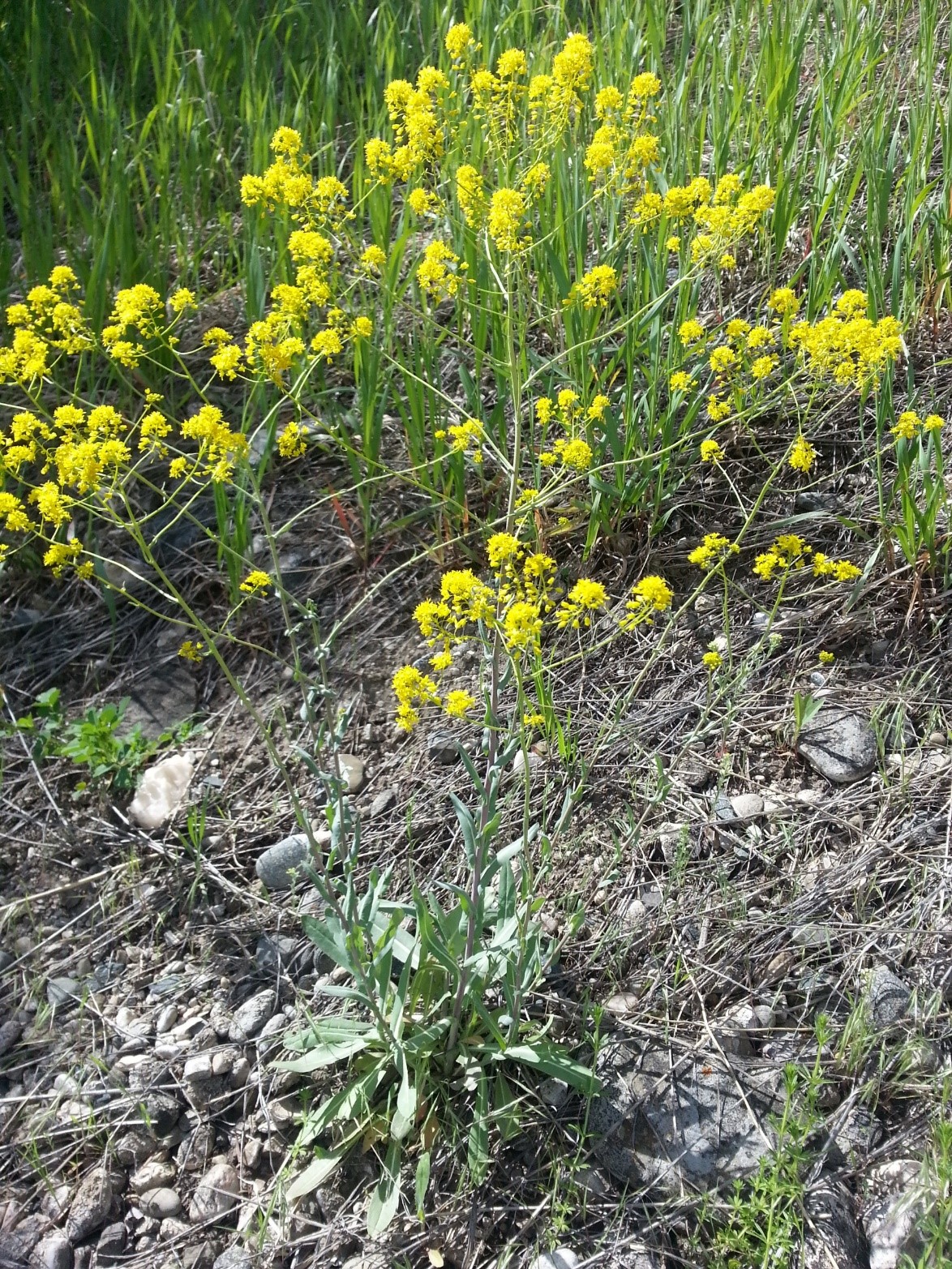
Video Information
Weed Images
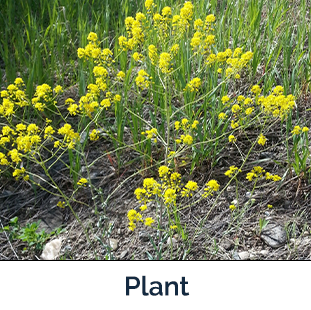
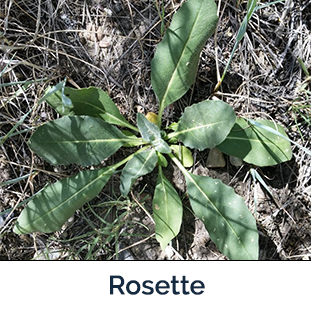
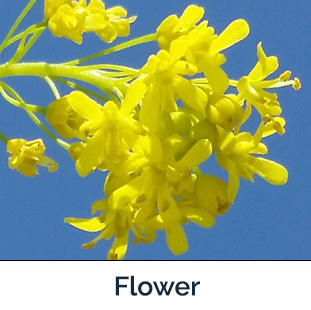
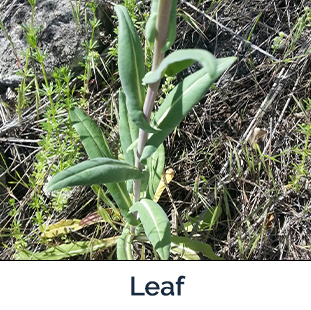
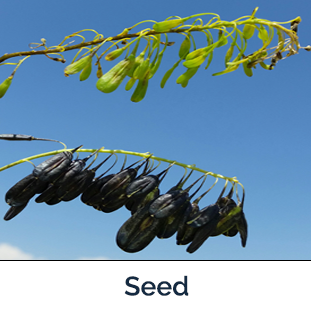
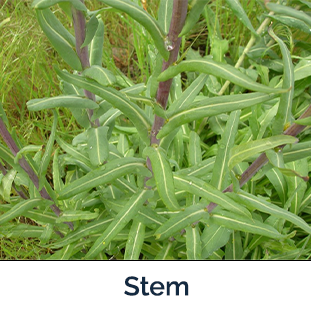
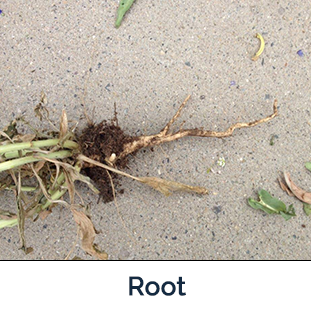
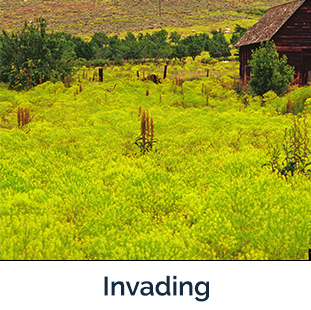
Weed Specifications
| Type | Information |
|---|---|
| Toxicity | Non-toxic, but is unpalatable to livestock and reduces forage |
| Best Management Practices | Hand pulling and digging, making sure to remove at least 3”-4” of the root, along with proper seed removal and disposal, and herbicide treatments *See management plan below |
| Habitat | Establishes on disturbed sites, such as roadsides, railroads, and gravel pits |
| Root | Taproot can exceed 5’ in depth, along with lateral roots |
| Leaves | Rubbery, like cabbage, and clasp the stem |
| Lifespan | Usually biennial, but sometimes annual or perennial |
| Similar Looking Plants | Other mustards |
| Important Information | Plants can grow 4” in one week, prolific seed producer, $50 bounty for infestations found more than a half mile from known populations |
Find Out More...
To Report, Contact:
Amber Burch
Beaverhead County Weed Coordinator
Montana Dyer’s Woad Task Force Coordinator
Phone: (406) 683-3790
E-mail: aburch@beaverheadcountymt.gov
Events
Ask a Question
Ask a Question
